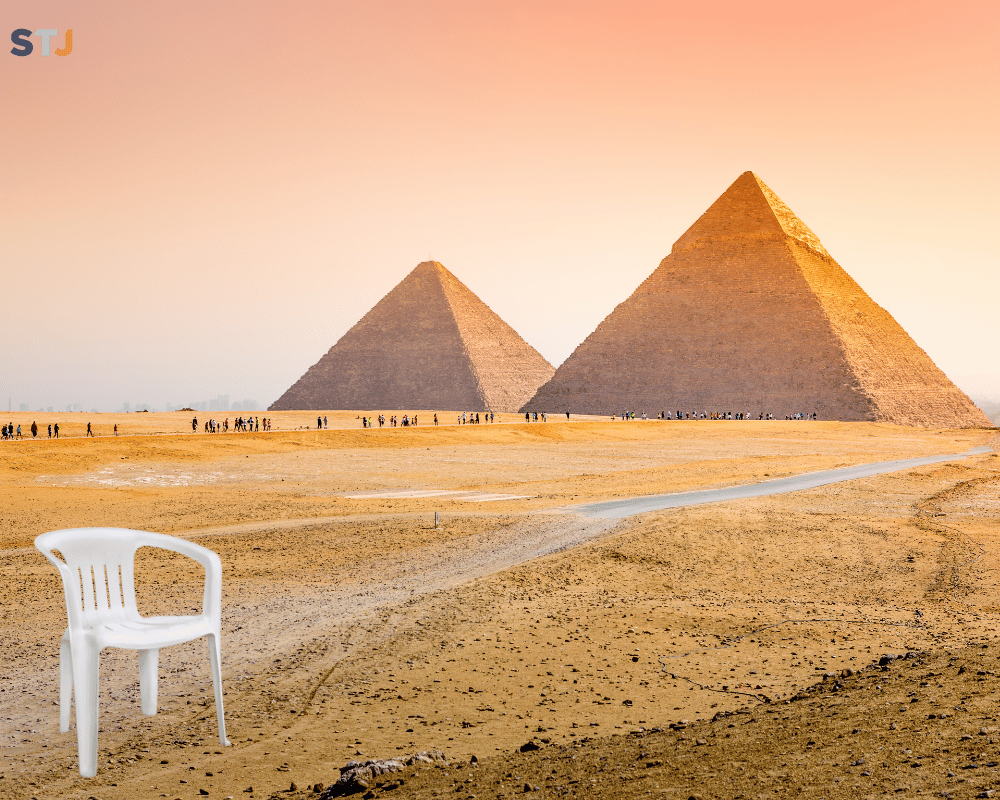O N W R I T I N G E G Y P T ’ S U N S E E N
By Kenzy Samir.
If you’re in the Travel Journalism program then it is safe to assume that you love travel. But one of the most important things I’ve learned—especially in Professor Marck’s class—is that loving travel isn’t enough. We also have to learn how to do it ethically. Some of the examples he shared really struck me—moments where I realized I had done similar things, and others where I’d witnessed them without giving it a second thought.
One of the concepts we explored in depth was responsible storytelling—especially the dangers of exoticizing cultures, the power of language, and the ethical questions around writing about “the other.” That conversation stayed with me. As an Arab, I’ve seen this exoticization play out again and again. And as someone planning to work on a story about Egypt—a country I’m connected to by blood but have never lived in—that discussion took on even more weight.

I’ve always known I wanted to write stories about Egypt. It’s how I feel most connected—to the place, to its people, to my own identity. Especially the stories that tend to be overlooked. But now that I’m preparing to explore spiritual spaces like Zar
ceremonies and Sufi whirling, the stakes feel different. These are deeply sacred spaces, layered with history, resistance, and healing. And I had to ask myself:
Who am I to tell these stories?
That question shifted everything for me. It stopped being, “Is this the right story for my final project?” and became, “Am I the right person to tell it?”
What this class made clear is that being a travel journalist isn’t just about observing—it’s about how you observe. If I reduce a spiritual ritual to a dramatic visual, or romanticize it to fit a Western fantasy of the “mystical East,” then I’m not honoring the culture—I’m extracting from it. The class pushed me to ask: Am I amplifying this story? Or am I aestheticizing it?
And in the middle of all this reflection, something small—but significant—stood out to me. In photos from previous trips to Egypt, one object kept reappearing: the white plastic chair. You know the one. It’s there at family gatherings, during deep conversations, in cafés, outside homes, stacked in mosques. And it’s there during rituals too—quiet, unnoticed, holding space.
That chair became symbolic. It doesn’t comment. It doesn’t interrupt. It doesn’t try to explain what’s happening. It simply exists. It listens. It supports. And strangely enough, it made me realize—that’s the kind of travel journalist I want to be. Observant. Grounded. Respectful. Not at the center of the story, but on the edge of the circle, holding space for others to speak.
Zar rituals, often led by women, have long been dismissed as superstition or labeled “witchcraft.” But they are emotional, complex ceremonies—spaces of collective healing and reclaimed voice. Sufi whirling is more than a tourist show. It’s a spiritual act rooted in divine connection. These are not performances for the outside world. They are cultural memory, resistance, survival.
The class made me more aware of the small but critical choices I’ll need to make: Am I using words like “exotic” or “mystical” that create distance rather than understanding? Am I tempted to add something that didn’t happen just to make the story more “interesting”? Am I centering myself in narratives that aren’t really mine?
It reminded me that ethical journalism isn’t just about avoiding harm — it’s about being intentionally humble. It’s about knowing when to lead, and when to listen. When I travel to Egypt, I won’t be treating the women who lead Zar rituals as “subjects.” I want to collaborate with them. I want to sit down and ask: How do you want this story told? I want to hand them
the mic.
That white chair taught me that’s how I want to be as a travel journalist.
Observant. Grounded. Respectful.
Because that feels more honest. More human.
And not every story has to be loud to matter. Sometimes, the most powerful image is a woman sitting in a white plastic chair, swaying to the rhythm of a drum, her eyes closed—not for the camera, not for me, but because it’s how she knows to heal.
So yes, I’m still writing about Egypt. About ritual. About spirit. But I’m not writing to explain it.
I’m writing to honor it.
This class didn’t just shape my project. It shaped me. And I’ll carry that lesson—quietly, like a white plastic chair at the edge of a ceremony— into every story I choose to tell.
This article is part of the practical work carried out by the students of the Master’s in Travel Journalism.

